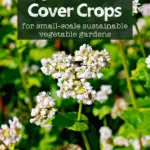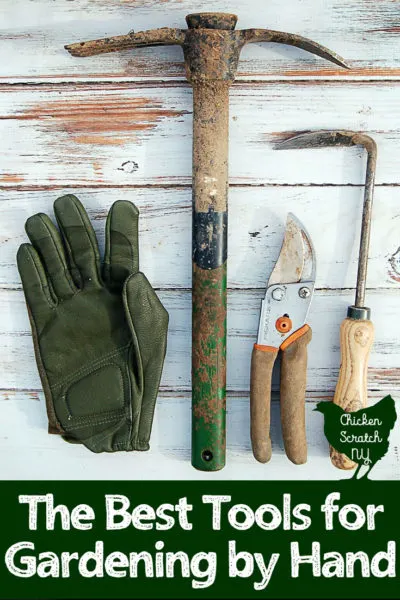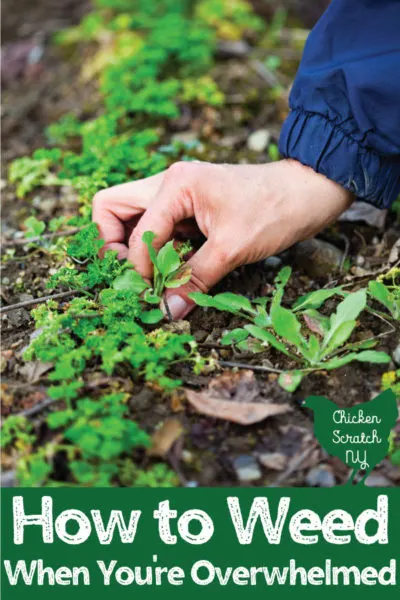Cover crops are a valuable tool in sustainable agriculture and the home vegetable garden. Also known as green manures they can be used to suppress weeds, add nutrients to the soil and improve soil structure.
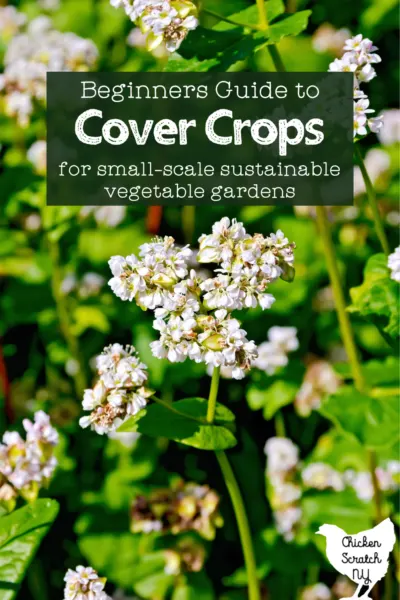
What are Cover Crops?
Cover crops are well named because they literally cover the soil. They provide shade, helping to conserve water and providing a better environment for soil dwelling microbes and earthworms.
They also prevent weed growth. Cover crops are quick growing and densely fill the garden space to prevent weeds from taking hold.
Cover crops are also called green manures because they can be chopped up and worked into the garden bed adding nutrients and increasing organic matter in the soil. Deep rooted cover crops draw up minerals from deep in the ground to where they can be utilized by your next vegetable or flower crop.
Cover crops grown with other plants are known as living mulches. You can even double up of your harvest growing two food crops together with one acting as a living mulch.
Head lettuce is a great living mulch, it grows in quickly but stays pretty short. It can be planted around peppers where it shades the soil, conserving moisture and allowing the plants to get established.
Then when when the peppers take off they provide shade to the lettuce during the hotter summer months where they help prevent bolting and bitterness giving you a longer harvest window.
How to Pick a Cover Crop
There are a lot of options when it comes to selecting a cover crop and there are a few important factors to consider before you start planting.
Planting Time
As long as you can work the soil there is some kind of cover crop you can plant. Some varieties are frost-sensitive while others are grown over the winter so you do have to put some thought into what you’re planting.
Mustard is a short term spring planted green manure that be be used to build up your soil before the regulars planting season starts.
One the other end of the spectrum you have winter rye and fava beans. They are both planted at the end of the growing season and allowed to over winter in the garden.
Growing Period
Another thing to consider when selecting a cover crop is the time commitment. You have options from crops that last a month to some that will grow for over a year.
The fast growing green manure options are a little more hands on, especially with mustard and buckwheat, where you have to keep an eye on the flowering and cut them back before they go to seed.
The 1-3 month options can be worked into a garden succession where you pull one crop and immediately plant another.
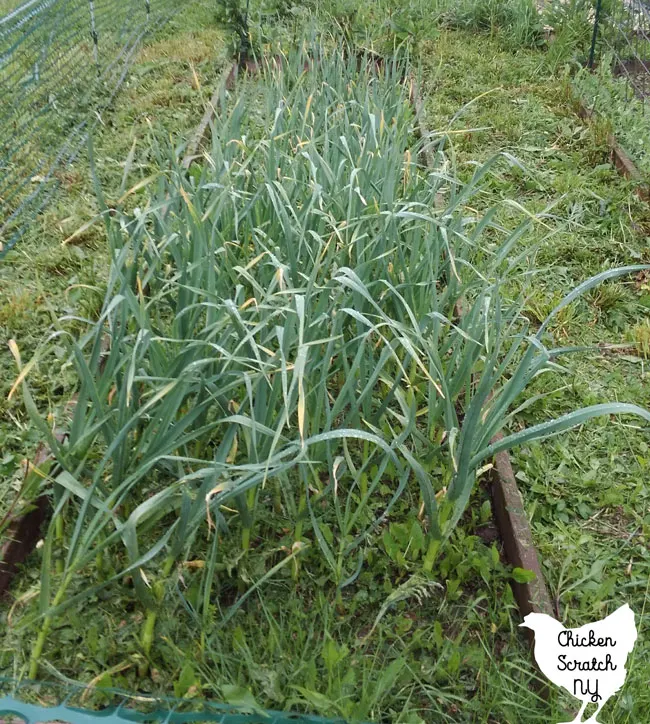
One of my favorite things to grow (and my best performing garden crop) is hardneck garlic. I plant in late fall and it gets pulled in July. Instead of leaving that bed bare it’s a great opportunity to throw in a quick cover crop.
Learn How to Grow Garlic
Long term options are great if you have too much garden space or you need to take a year off. If you leave the soil open you’ll come back to a mass of weeds, instead you should put in a crop of alfalfa or red clover.
Not only will it keep your garden from turning into a mess it will also improve you soil so you’re garden will be even better when you come back to it.
Purpose
In order to really appreciate the value of cover crops I think it helps to know how they work. All cover crops will provide weed suppression and add organic matter when worked back into the soil but they have a few more tricks up their sleeves.
Weed Suppression
Cover crops are intentionally planted at a high density in order to crowd out weeds and stop them from growing. They can also have an allelopathic effect on the soil, the plants themselves produce chemicals that inhibit seed germination eliminating competition.
Adding Organic Matter
After they’ve reached the end of their growth cycle cover crops should be chopped up and worked back into the soil. All of that organic matter will be broken down by microorganisms in the soil.
This is especially helpful in heavy clay soil where the addition of organic matter will loosen up the soil providing better growing conditions for your plants.
Nitrogen Fixing
Did you know that some pants can produce their own fertilizer? Legumes (beans, peas & close relatives) have a symbiotic relationship (mutually beneficial) with a specific soil bacteria (Rhizobium spp.) where the product nitrogen in root nodules.
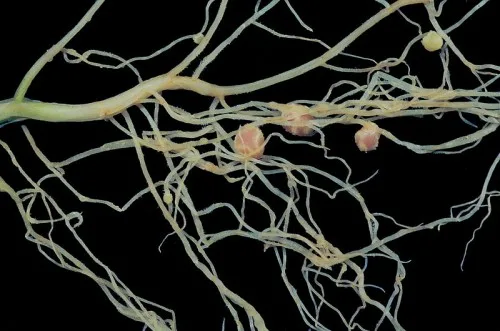
If you’ve ever pulled up a bean plant and seed little tan nubbies on the roots, first off, congrats on your nitrogen fixing and now you know what they are!
Read more about Ornamental Legumes that Improve your Soil
Improve Soil Structure
Plants with taproots send long roots deep into the soil, sometimes 3-5 feet deep. When those roots rot away they leave spaces in the soil allowing for air flow and water drainage.
Even plants with shallow and fibrous root systems can improve soil structure by loosening it up which allows for more water flow and earthworm activity.
Improve Soil Nutrients
The same deep taproots that bust up the soil pull up nutrients and minerals up to the surface where they can be reached by crops with shallower roots.
In order to take advantage of this benefit you need to leave the chopped up roots and plant matter in the garden bed. As it decomposes and breaks down those nutrients will made available in the soil.
Types of Cover Crops
Now that we’ve covered the important factors in choosing a green manure and the benefits of them we’re going to talk about specific cover crops.
A lot of your options are in the legume family, make sure you don’t use those in areas where you have renectly or will be planting beans and peas.
Similarly, mustard and radish are common cover crops and part of the the brassica family. Avoid planting them before or after growing anything from that family including broccoli and brussels sprouts.
Buckwheat
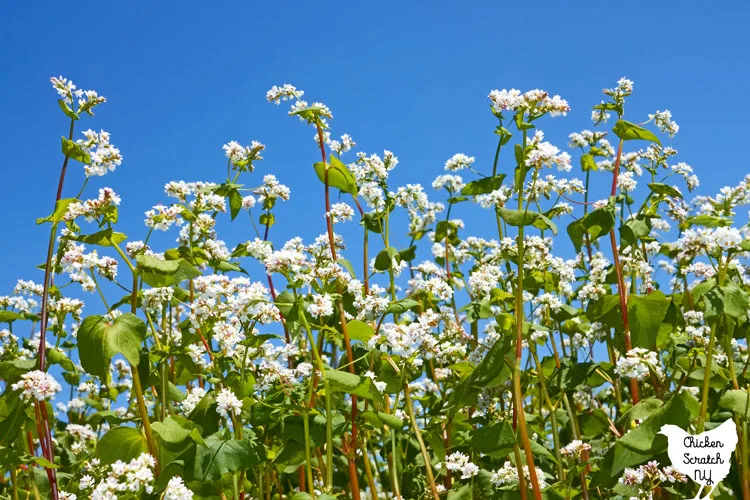
- Quick growing, mow or cut back while flowering at 35-40 days after planting
- Plant from late spring to midsummer
- Attracts beneficial insects
- Can also be grown as a grain crop
- Part of the Rhubarb family, easy to fit in garden rotation
Alfalfa
- Perennial legume
- Nitrogen fixing
- Plant from late spring to midsummer
- Attracts beneficial insects
- Can be used as livestock forage
Broad/Fava Beans
- Annual legume
- Nitrogen fixing
- Can be planted in late fall for over wintering or very early in the spring (will germinate at 35 degrees)
- Thick & deep roots break up soil
Crimson Clover
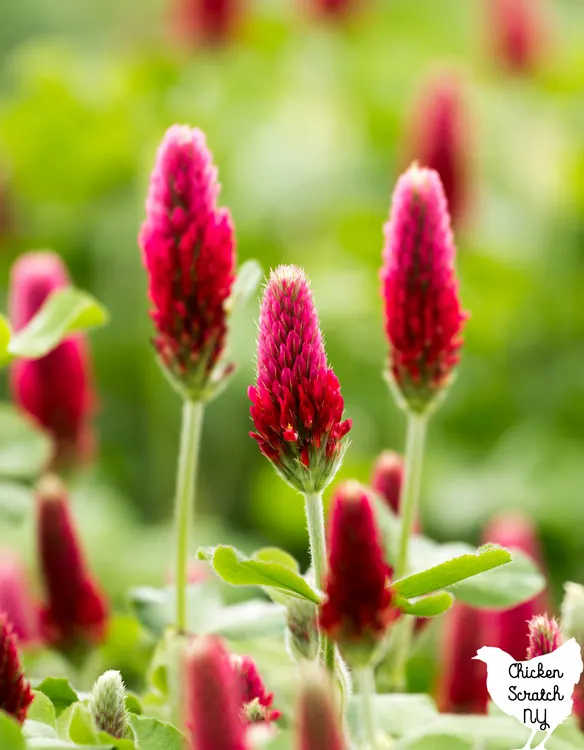
- Annual legume (can be over wintered in zone 6 and warmer)
- Not as cold hardy as Red Clover
- Grows 1-3 feet tall
- Long tap root to break up soil
- Nitrogen fixing
- Plant from late spring to midsummer (flowers in ~70 days)
- Attracts beneficial insects
- Flowers can be used to make tea
Read more about Edible Flowers
Red Clover
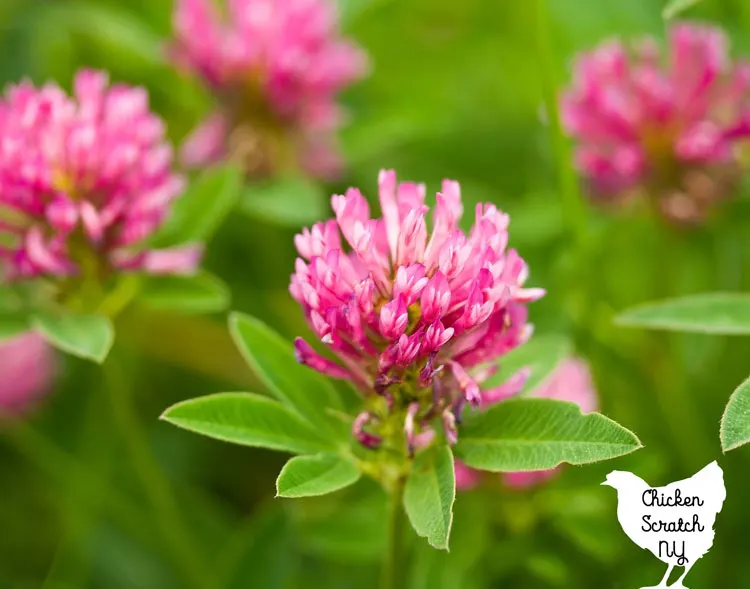
- Perennial legume (zone 4 and up)
- Grows 2-3 feet tall
- Nitrogen fixing
- Plant from late spring to midsummer
- Attracts beneficial insects
- Can be used as livestock forage
- Tolerates wet soil
White Clover
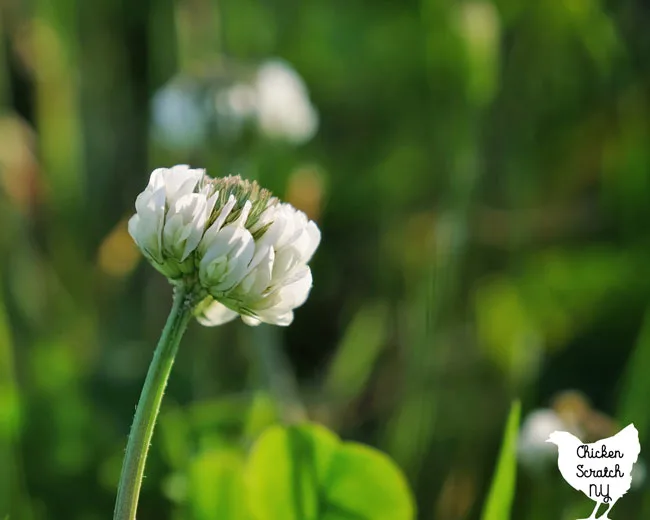
- Short-lived perennial legume (can reseed)
- Nitrogen fixing
- 12″ plants work well as a living mulch
- Deep taproot dies in the winter
- Can tolerate foot traffic
- Plant from late spring to midsummer (flowers in 60-70 days)
- Attracts beneficial insects
- Can be used as livestock forage
Vetch
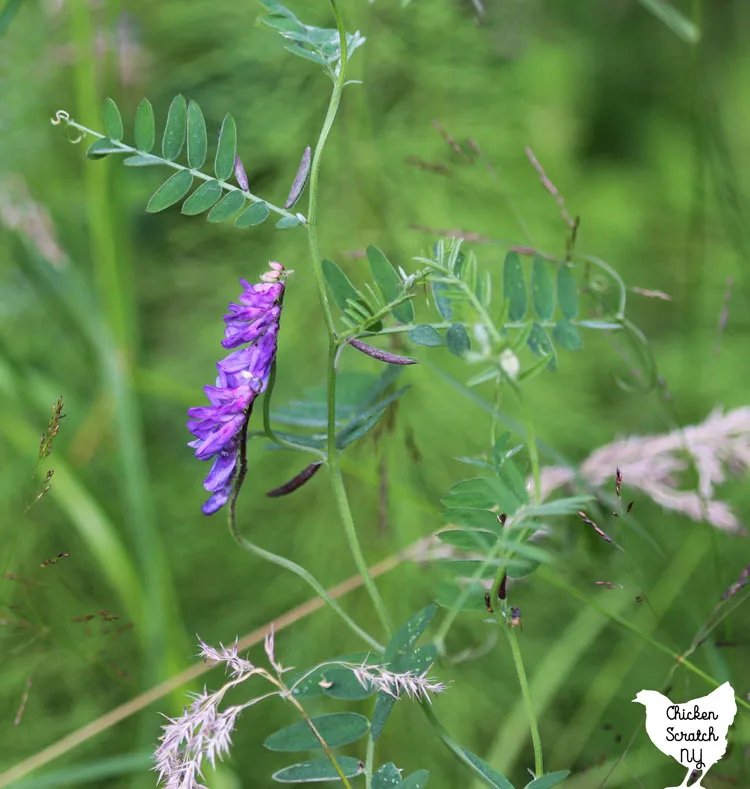
- Annual legume (can be over wintered in zone 6 and warmer)
- Nitrogen fixing
- Plant in spring or late summer for overwintering (spring planted vetch flowers in ~60 days)
- Attracts beneficial insects
- Potentially allelopathic
- Usually grown in combination with something else like peas & oats
Field Peas

- Annual legume
- Nitrogen fixing
- Attracts beneficial insects
- Edible flowers
- Usually grown with something to climb like oats (like in this Soil Building Cover Crop Seed Mix)
- Fall plantings are killed by frost and do not regrow in the spring
Mustard
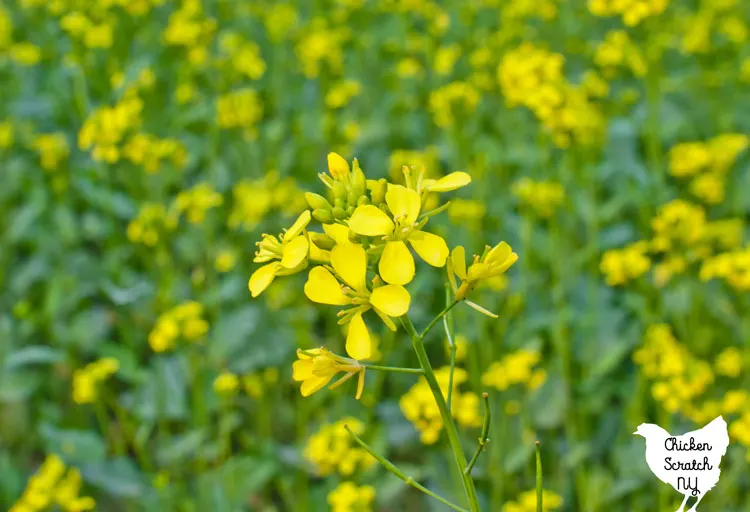
- Cool season annual (spring or fall)
- Brassica family
- Quick growing
- Deep taproots
- Biofumigant – reduces some soil pathogens and nematodes (green plants must be cut while flowering and worked into the soil for this benefit)
- Attracts beneficial insects
- Easily reseeds, cut down while flowering before seeds form
Radish
- Cool season annual (spring or fall)
- Cold Hardy
- Brassica family
- Quick growing
- Deep Taproot
- Biofumigant
Oats
- Cool Season Annual (spring or fall)
- Usually grown with legume cover crops like vetch or field peas
- Will winter kill, dead plant material protects the soil
- Do not regrow in the spring
- Can be used as livestock forage
Ryegrass (Lolium multiflorum)
- Annual
- Not winter hardy in cold areas
- Thick, fast growing grass
- Can be difficult to control without using herbicide
Winter Rye (Secale cereale)
- Annual
- Planted in the late summer to early winter for spring growth
- Can also be planted in spring-fall for green manure
- Straw & grain crop
- Can be used as livestock forage
Where to Buy Cover Crop Seed
Green manures are always grown from seed and usually they’re sown at a high density. That adds up even if you’re only seeding a few beds.
Luckily cover crop seeds are usually sold in large packets or by the pound. The price varies by crop type but the seeds are inexpensive for the amounts you get.
Another benefit is that most seeds remain viable for several years and buying in bulk will keep you set up for a while.
I buy most of my green manures from Johnny’s Seeds and Botanical Interests. Cover crops are not a new idea and most seed companies offer something for cover cropping at this point.
Johnny’s has more variety but they are aimed at commercial producers or market gardeners. They can be really expensive for small packets, again home gardeners aren’t their target client, but I like to buy cover crops, sprouting seeds and my pea shoot seeds from them (anything I can get in a large quantity).
Read more about How to Grow Pea Shoots
Botanical Interests has fewer options but I think their prices and packet sizes are more manageable for home gardeners. It’s also really easy to throw a few packets of Soil Builder or Buckwheat into a regular seed order.
Read more about Ordering Seeds
How to Plant Cover Crops
Cover crops are largely hands off, in general you plant them and then ignore them until you need the space again (or they start to go to seed and you need to wipe them out).
If you’re planting a cover crop immediately after a harvest you don’t need to do anything. Just rake the soil flat and plant as directed.
For best results with weed suppression do you best to get that cover crop planted as soon as you’ve finished the harvest and cleared the bed. Don’t give the weeds a chance to take over!
Check the package for seed spacing, scatter the seeds, lightly rake and press the seeds into the ground. Give the seeds a nice drink and let them do their thing.
Let the plants grow and enjoy the hand-off benefits they have to offer. When it comes time to dispatch them, either because they’re going to seed or you need the space, you have a few options.
Depending on your garden set up you can mow down the cover crop, use a weedwhacker or just chop away with a hoe. Don’t toss all that lovely growth! Either work it back into the soil or use it as a mulch on top of the ground.
A few types of green manure (especially winter rye) will inhabit seed germination so either wait a few weeks before seeding or use transplants instead.
Check out my Vegetable Garden page for more ideas or start here:

